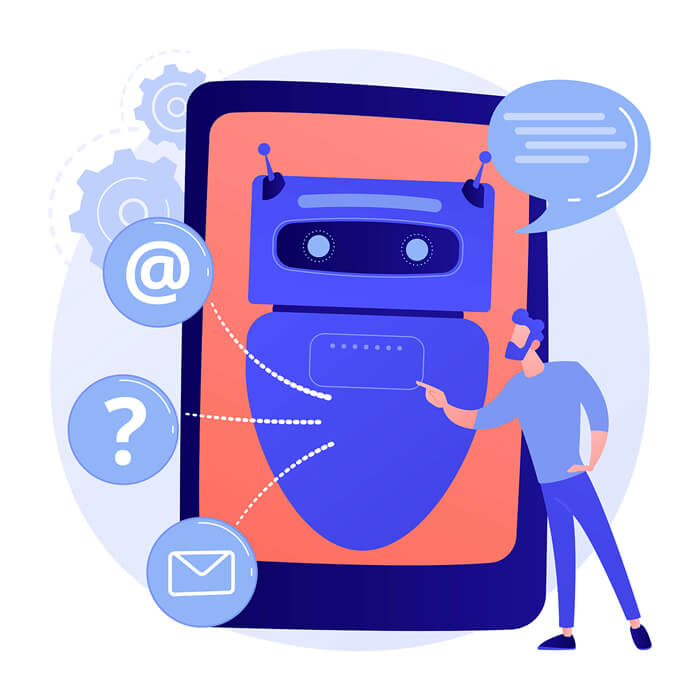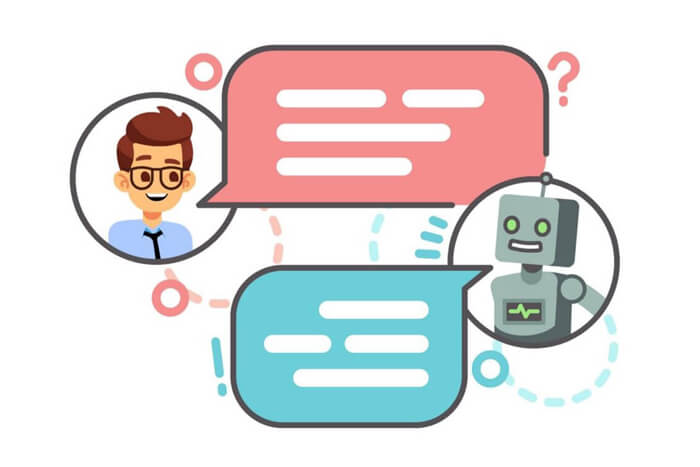Thank You!
A confirmation latter has been sent to your email. Check your inbox.


A rapid surge of innovation in technologies is revolutionising digital experiences across many industries ranging from customer service to healthcare, finance to e-commerce, and beyond. Digital interactions are providing more user-centric and intuitive experiences due to the advancements that are elevating the quality by enhancing the accuracy and context of the responses. The implication of NLP, i.e. natural language processing, is one of those products of technological innovations which is budding in the digital world at a greater pace. Speaking about the incorporation of NLP in chatbots, this fusion of technology has undoubtedly redefined how digital experiences are humanised for many evident reasons that are explained further in this article. This tech duo has proven to be a seamless and efficient means of communication between users and technology. It has paved the way for chatbots to engage users in more dynamic and interactive conversations that mimic human-like interactions. Therefore, the integration of natural language processing (NLP) into chatbots has led to a significant transformation in how digital experiences are getting a human touch, matching the capabilities of a cognitive human brain. Furthermore, NLP, as a subset of artificial intelligence, enables chatbots to comprehend and respond to human language understanding the nuances of human speech, including emotions, tone, and intent.
NLP-based Chatbots learn from their interactions with users and the data they receive. They use machine learning algorithms to analyse this data and identify patterns, which empower them to improve their responses over time. The process is similar to how humans learn from their experiences.
Once an NLP-based Chatbot has learned information, it can use reasoning to make decisions based on that learned system. Thus, They can use logical reasoning to analyse user queries and determine the best response and can also use probabilistic reasoning to estimate the likelihood of a certain outcome.
Understanding is the ability of chatbots to comprehend the meaning behind user queries. Chatbots use natural language understanding (NLU) to identify the intent of the user's query and extract important information such as names, dates, and locations. This helps chatbots provide more accurate and relevant responses.
Perceiving is the ability of chatbots to perceive the context of user queries. They use natural language processing techniques to analyse the text or speech input and determine the context in which the query was made to provide more relevant responses.
Here are the traits of NLP
The functioning mechanism of the NLP in chatbots plays a vital role in understanding the efficiency and efficacy of the technology behind it. Firstly, simplifying the definition of NLP, It's the art of understanding language, the science of communication, and the essence of humanisation in the realm of technology and digitalisation. It is, basically, the bridge that fills the gap between the intricacies of human language and the boundless potential of technology, opening up new horizons of innovation and structuring the future of how we communicate in the digital globe.
However, the fact is it has existed for more than 50 years and has its roots in the field of linguistics. It empowers computers to understand natural language as humans do, And that is how it breathes life into chatbots, making them eloquent conversationalists.
Whether the language is spoken or written, natural language processing fetches energy from artificial intelligence to take real-world input, process it, and make sense of it, just as humans have different sensors like our body’s sensor symphony - “ears to hear and eyes to see”.
However, two main aspects of the functioning of the NLP are:
NLP-based chatbots are used in e-commerce to analyse customer feedback, reviews, and social media trends to improve product recommendations, marketing strategies, and customer engagement.
Looking at some real examples of its application, Google's NLP technology is used in many of its products, including the Google Search engine, Google Translate, and Google Now. Microsoft has used NLP in its Cortana digital assistant and Bing search engine. Amazon's Alexa virtual assistant also uses NLP. And Facebook's Messenger app uses NLP to power its chatbot feature.
NLP is used in healthcare to analyse and extract information from electronic health records, medical literature, and clinical notes. It can help diagnose diseases, identify risk factors, and monitor patient outcomes.
NLP can be used to analyse electronic health records (EHRs) and clinical notes to identify patterns, extract key information, and improve clinical decision-making. It can also be used for clinical trial matching, diagnosis and treatment recommendations, patient monitoring and prediction, pharmacovigilance, and quality improvement.
NLP is used in finance to analyse market data, financial news, and social media trends to make informed investment decisions. It can also be used for fraud detection, credit scoring, and customer service.
NLP is used in customer service to provide chatbots and virtual assistants that can interact with customers in a natural and conversational way. It can help resolve customer queries, provide personalised recommendations, and improve customer satisfaction.
NLP is used in education to analyse student data, improve learning outcomes, and provide personalised recommendations. It can also be used for automated grading, plagiarism detection, and language learning.
NLP is used in marketing to analyse customer feedback, sentiment analysis, and social media trends to create more effective marketing campaigns, target specific audiences, and improve customer engagement.
NLP-based chatbots can help elevate business processes and customer experience to the next level while also increasing overall growth and profitability. It provides technological advantages to stay competitive in the market-saving, time, effort and costs that further lead to increased customer satisfaction and increased engagements in your business. Thus, it significantly justifies its immense potential for improving efficiency, accuracy, and customer satisfaction.

As humans, we rely on language to communicate. It's a medium we use to share our thoughts, feelings, and experiences with others. Similarly, Chatbots couldn't carry on conversations without an effective NLP. This technology is what allows them to understand and respond to people in a way that simulates human conversation. Hence, NLP is essential to any chatbot's functionality and power. One challenge of using NLP for chatbot conversations is that the technology is still in its early stages of development.

Firstly, it is crucial to keep the design intuitive, use natural language, and avoid technical jargon while building NLP and chatbot systems. Secondly, collect high-quality data and label it accurately to improve the accuracy of the NLP model. Testing and iteration are essential for improving the chatbot's performance and achieving your goals. With these tips, you can build an effective NLP and chatbot system that meets your needs and improves your customer engagement. At sumcircle technologies, we constantly emphasise educating ourselves with such new technological trends in bettering our performance so that we can implement new-age solutions for evolving businesses. As businesses look for ways to automate customer engagement cost-effectively, utilising NLP is an option worth exploring as it allows them to provide personalised responses while increasing efficiency and reducing costs.
Natural Language Processing is at the heart of humanizing digital experiences by enabling chatbots to understand, interpret, and respond in a way that mimics real human conversations. With advanced AI-powered chatbots and conversational AI, businesses are no longer just automating responses—they're building trust and emotional connection through intelligent dialogue. From intent recognition to sentiment analysis, NLP enhances every layer of customer service automation. As user expectations evolve, leveraging NLP technology in chatbots becomes essential to deliver seamless, empathetic, and engaging digital experiences that truly resonate with users.
Our expertise spans a diverse and proven tech stack, carefully employed to build solutions that meet evolving business needs with precision and reliability.
BACK END
FRONT END
CONTAINERIZATION
AUTOMATION
CI/CD TOOLS
MONITORING
PROGRAMMING LANGUAGES
FRAMEWORKS
LIBRARIES
CLOUD SERVICES